One can’t deny the importance of the Honda CR-V in the Philippine market. Globally, it’s one of the first ones to combine the practicality and capability of SUVs and the refined driving characteristics of cars, hence the birth of the crossover segment.
Locally, it’s one of the first to bring Honda SENSING technology to the discerning Filipino buyer who want to invest on safety. It has been making headlines again with the new-generation model by introducing the brand’s first hybrid model locally, the CR-V RS e:HEV.
There are three CR-V variants available in the market: the base V, the VX, and the hybrid RS e:HEV. If you’re cross-shopping between the pure gasoline and the hybrid version, which one should you choose? Let’s break down the differences between the CR-V V and the RS e:HEV and see which one suits your lifestyle better.
Style or Sport?
At first glance, these two CR-V models seem quite similar, but there are subtle differences that set them apart. The CR-V V keeps it classy with a chrome strip across the grille. However, the unit in the photos comes with some added Modulo accessories, which might add a bit of flair.
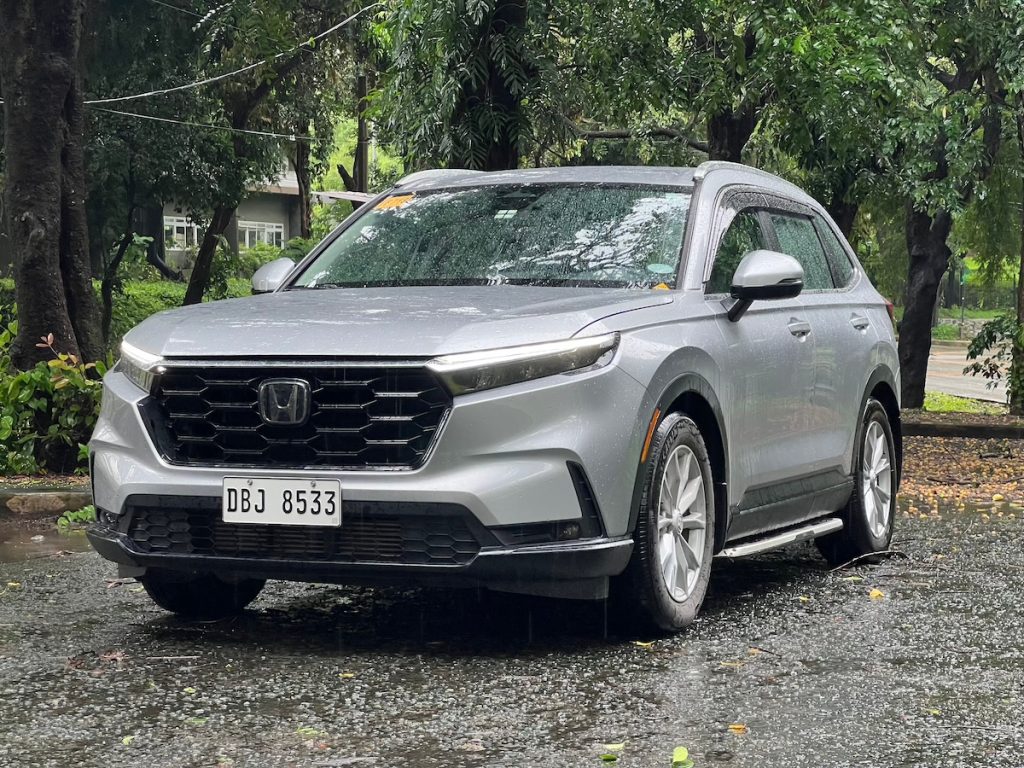
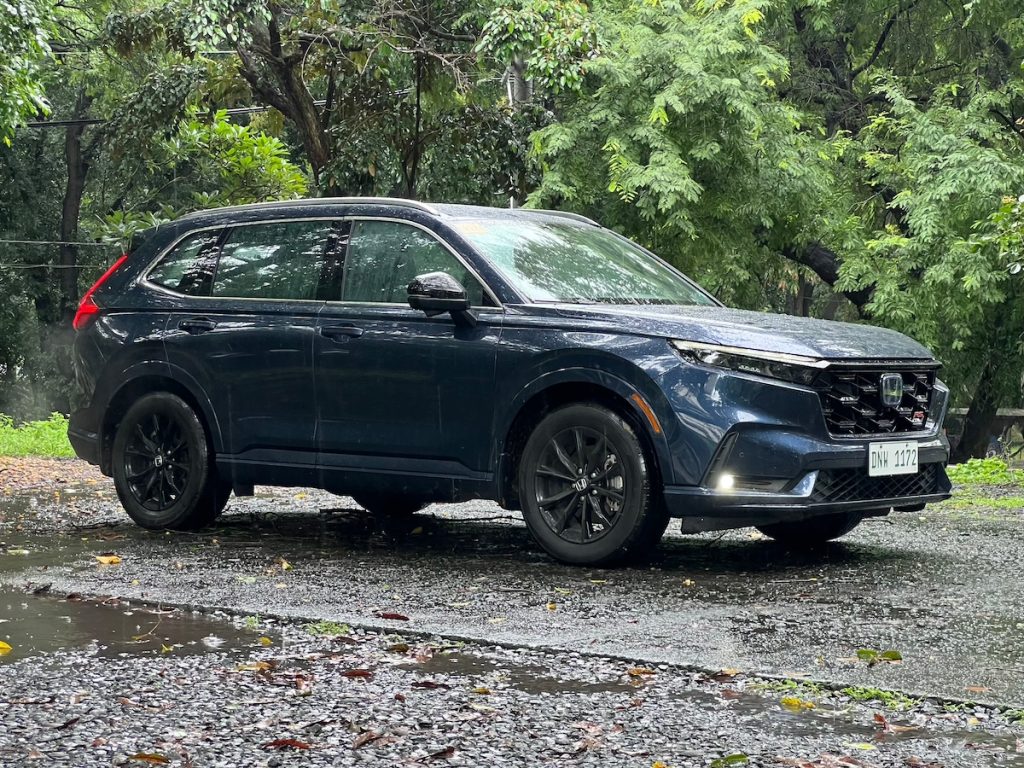
On the flip side, the RS e:HEV goes for a sportier vibe with blacked-out wheels and side mirrors, along with a sleek tailpipe finish. It’s subtle but in a way that screams “I’m fast,” without being too loud about it. If you prefer a more athletic look, the RS e:HEV is definitely the cooler sibling.
Features Galore
Features-wise, the RS e:HEV is the clear favorite. It’s packed with high-end goodies like auto-levelling headlights, active cornering lights, adaptive driving beams, and even a panoramic sunroof to let in some extra sunshine. Roof rails? Check. All these touches give the RS e:HEV a solid edge, especially if you’re into functionality and a bit of luxury.
Meanwhile, the CR-V V doesn’t fall too far behind, but it’s not as loaded as its hybrid counterpart. That said, it still offers plenty of what you need, without going overboard on luxury. If you’re someone who appreciates practicality and doesn’t need all the bells and whistles, the V trim covers the basics well.
5-Seater vs 7-Seater Showdown
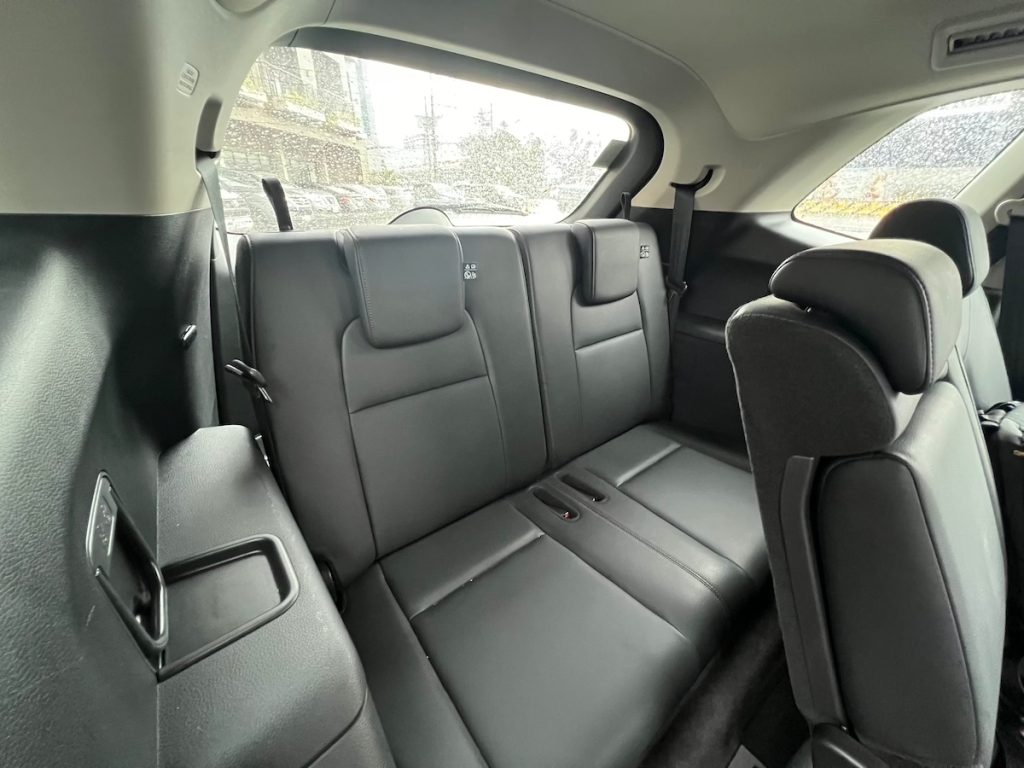
The interior is another key area where the two models diverge. The CR-V RS e:HEV sticks to a 5-seat layout, which means you get more space for luggage but fewer seats for passengers. This is because the hybrid batteries take up the space where the third row would typically go.
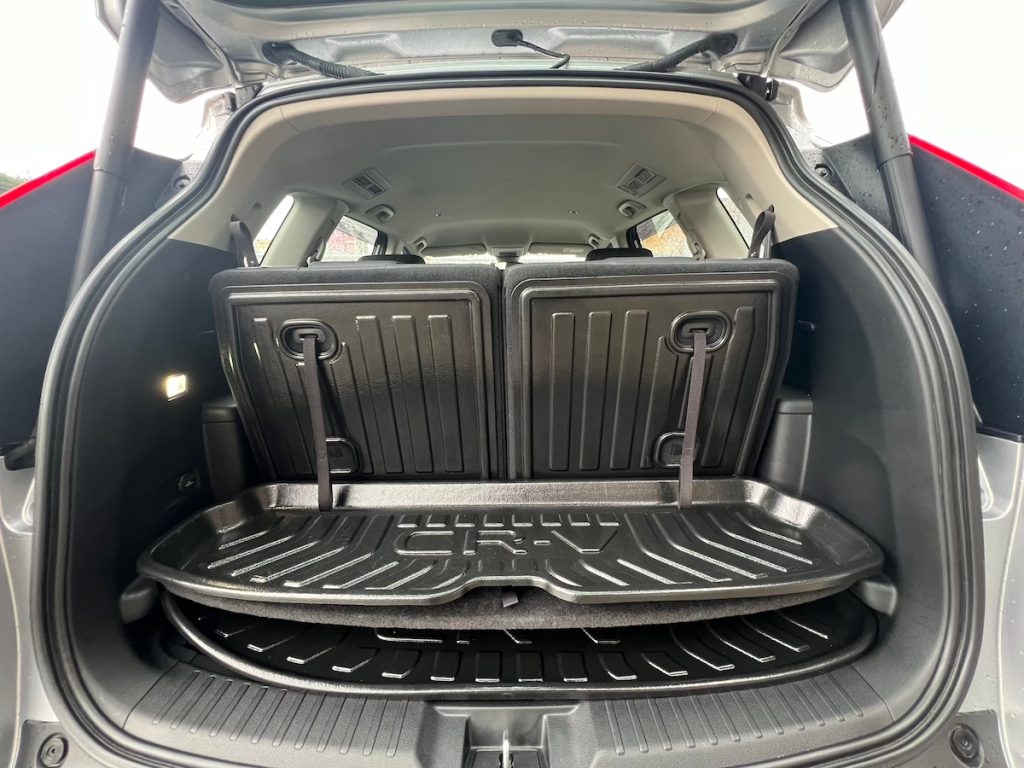
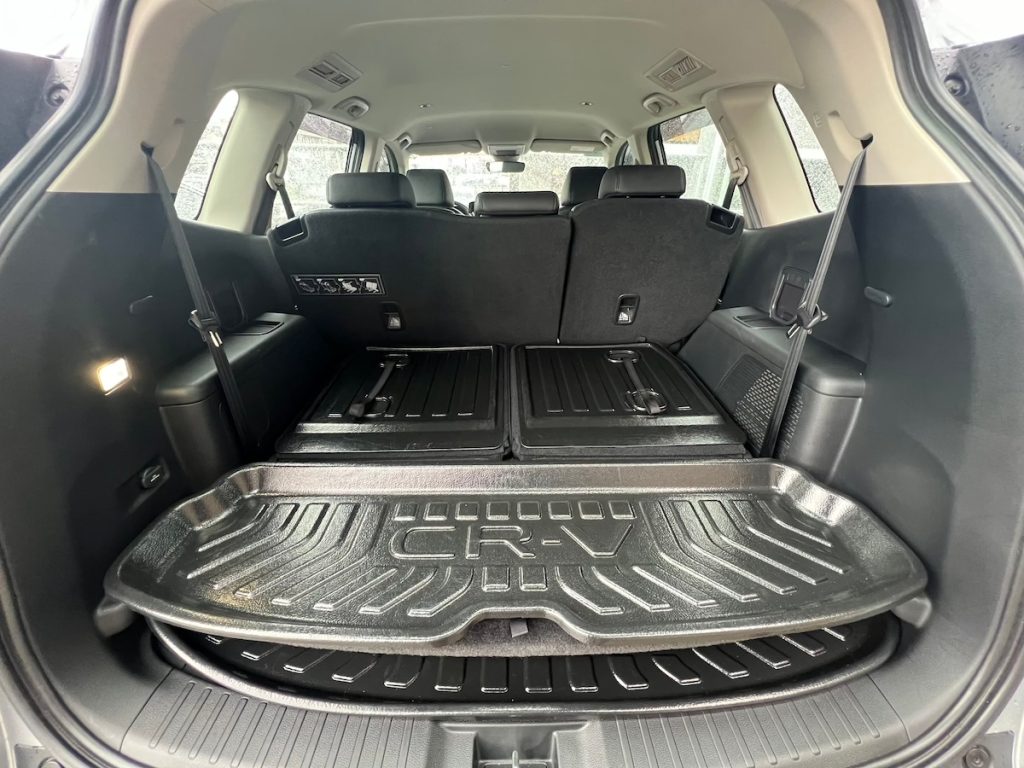
The CR-V V, however, comes with a third row, making it a 7-seater. If you’re hauling the whole family or regularly need the extra seats, this trim is perfect for you. But if you prefer extra cargo space and won’t miss the third row, the RS e:HEV’s roomier 5-seat setup will suit your needs just fine.
Both models have similar front-row setups, but the RS e:HEV does sneak in a few premium touches like a Bose 12-speaker sound system, Smart Key Card, Heads-Up Display, and Sport Pedals. These little luxuries make the RS e:HEV feel a bit more upscale, which is great if you’re into that premium feel.
Loaded on Safety & Tech
When it comes to safety, both models come with the full suite of Honda SENSING tech. That means you get things like adaptive cruise control, lane-keeping assist, and collision mitigation braking, whether you choose the V or the RS e:HEV. But, the hybrid RS throws in a few extra goodies to sweeten the deal, such as a 360-degree camera, Agile Handling Assist, and Driver Attention Monitor.
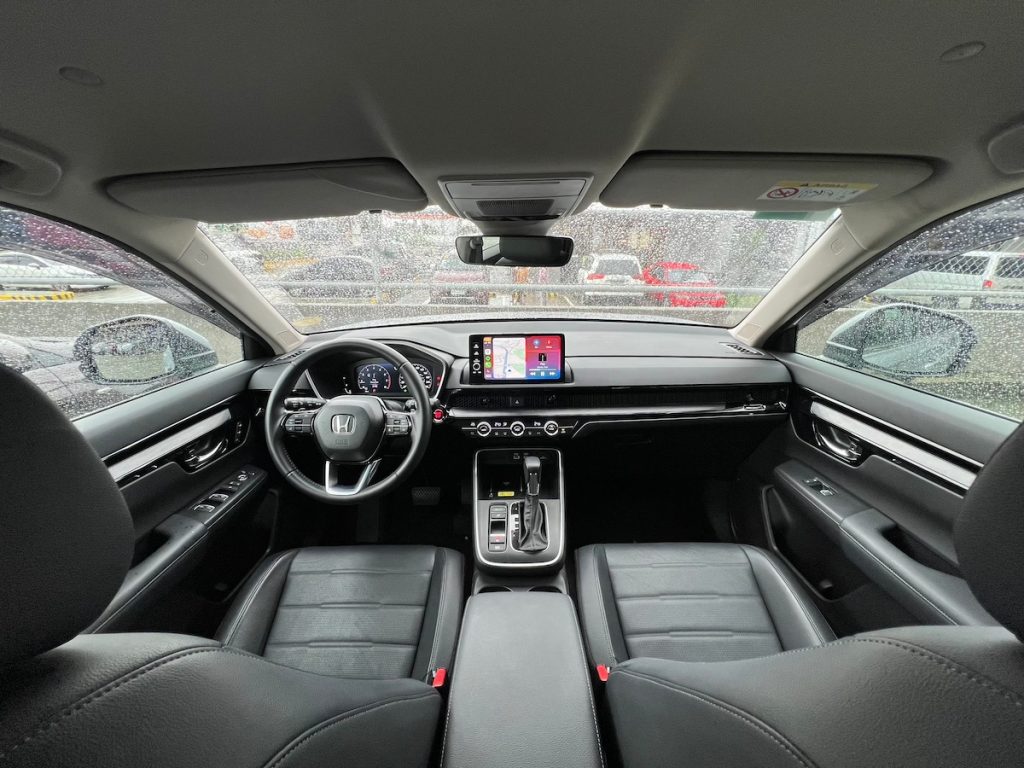
The RS e:HEV also has front and rear parking sensors, which is a nice touch when you’re squeezing into tight parking spots. If safety tech is a big part of your decision-making process, the RS e:HEV edges out the V trim here, but both are solid choices for peace of mind on the road.
The Major Difference
This is where things get interesting. Under the hood, the two CR-Vs couldn’t be more different. The RS e:HEV is Honda’s first hybrid in the Philippines, and it’s a powertrain that delivers a solid 207 horsepower and a meaty 335 Nm of torque. It’s not just about power, though; it’s about efficiency. We managed to get 15.8 km/l in mixed driving, which is pretty impressive for a crossover this size.


The CR-V V, on the other hand, packs a turbocharged 1.5-liter engine that produces 190 hp and 240 Nm of torque. It’s mated to a CVT, and while it’s smooth and refined, it doesn’t quite match the hybrid’s fuel efficiency. In similar driving conditions, we got around 8.8 km/l. If you’re constantly on the go and fuel savings are a priority, the RS e:HEV is the way to go. But if you prefer the punchy feel of a turbo engine and aren’t too worried about extra fuel stops, the V will get the job done.
Turbo Thrills or Hybrid Efficiency?
Now, let’s talk driving experience. If you’re used to a traditional gas-powered engine, the CR-V V is going to feel familiar. It’s smooth, powerful, and very “Honda” in how it behaves – quiet, capable, and reliable. The turbo engine delivers a nice punch when you step on the gas, and the CVT makes everything feel effortless.
The RS e:HEV, on the other hand, has a more unique feel thanks to its hybrid powertrain. In the city, it uses electric power as much as possible, so you’re often gliding along in near silence, saving fuel. The gasoline engine only kicks in when you need an extra boost, like when you’re overtaking or climbing a hill. On the highway, the engine does most of the heavy lifting during acceleration, but once you’re cruising, it switches back to electric power to maximize fuel efficiency.
If you do a lot of city driving or hate the sight of your fuel gauge dipping too quickly, the hybrid RS is going to be a game-changer. But if you prefer the straightforward power of a turbo engine and aren’t too fussed about fuel economy, the V trim is still a great choice.
While cabin insulation could be better on both, the suspension setup on both cars is superb. Whether you’re navigating city potholes or cruising on the highway, the ride is smooth and cushioned, making everyday driving a breeze.
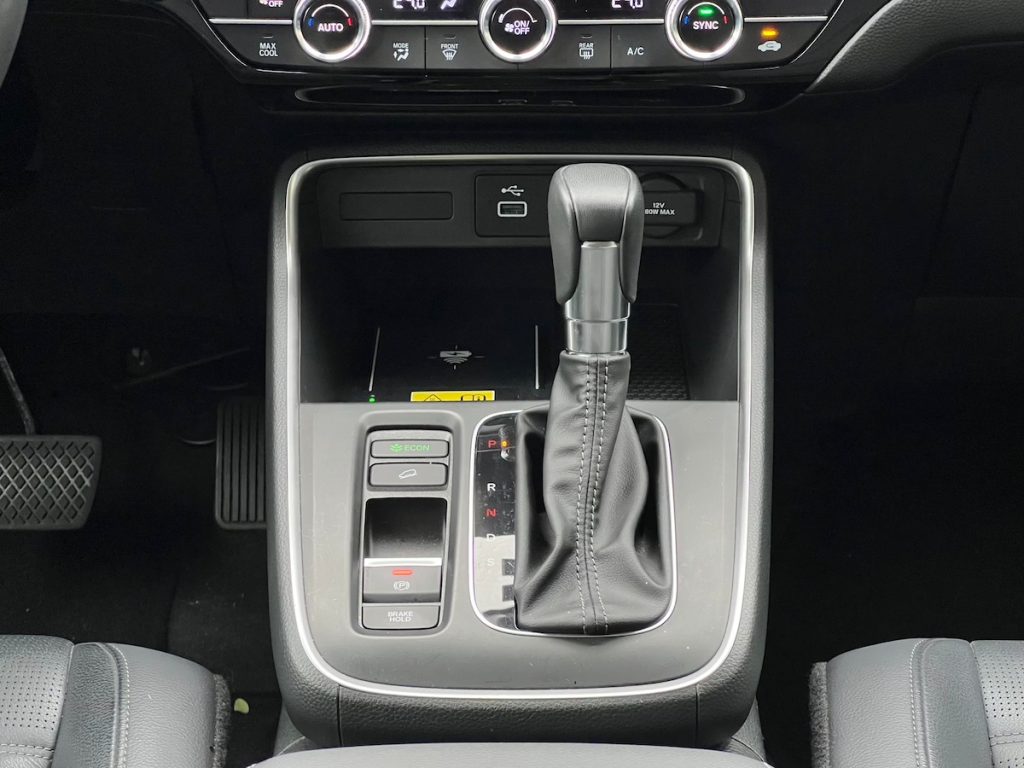
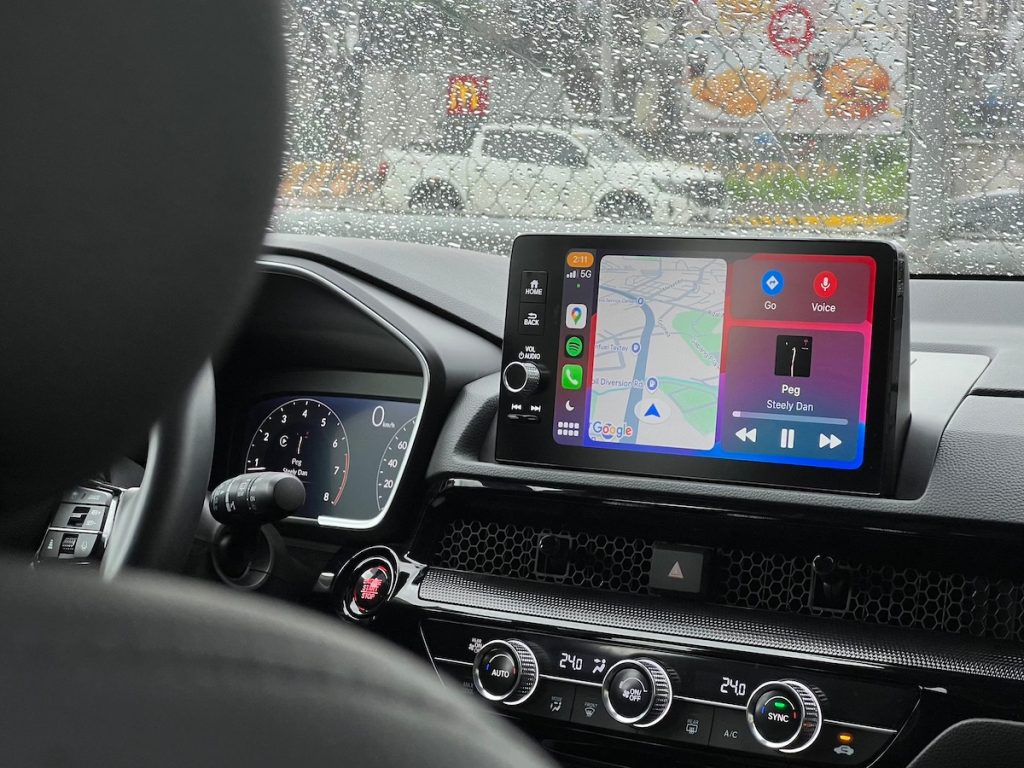
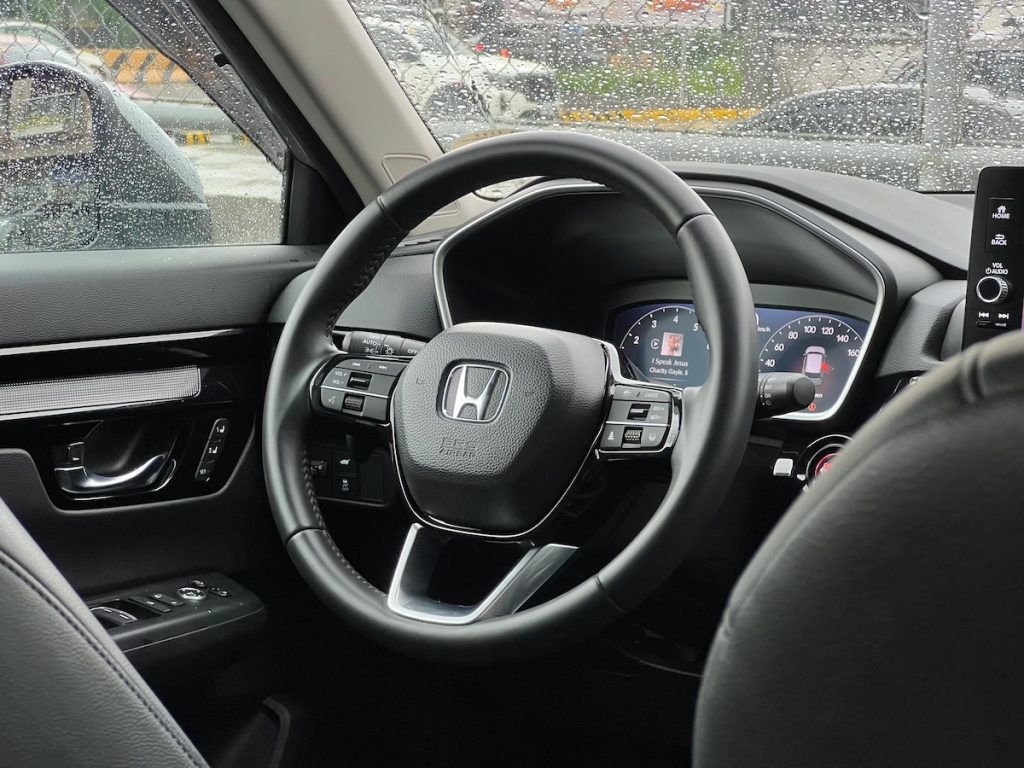
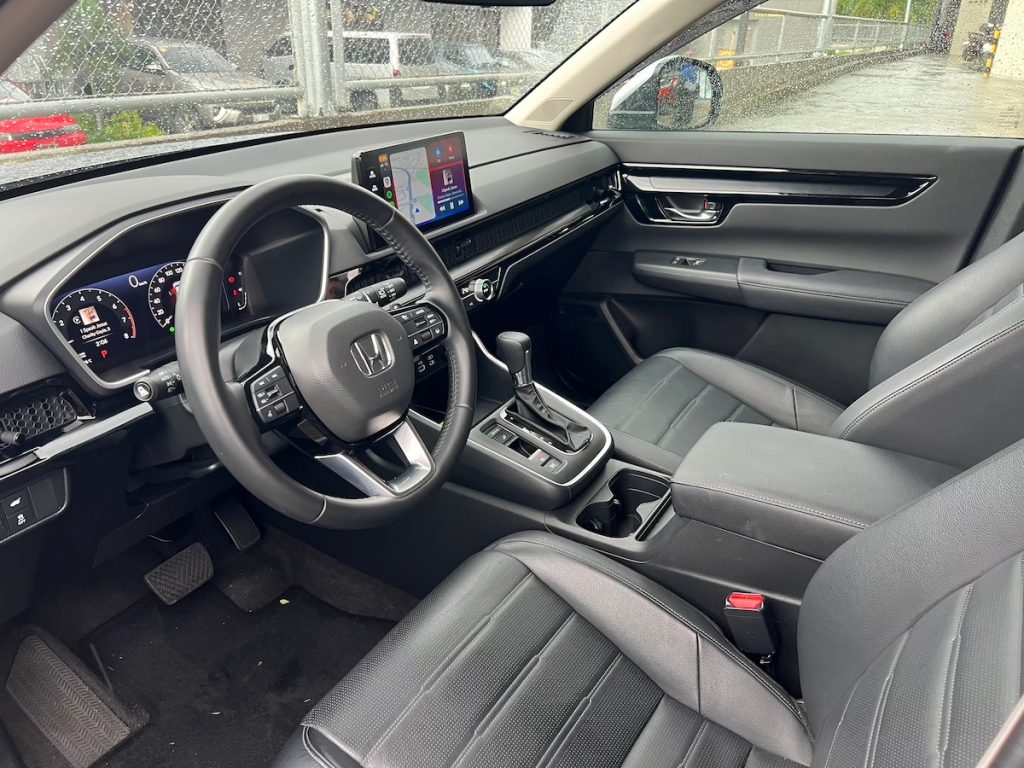
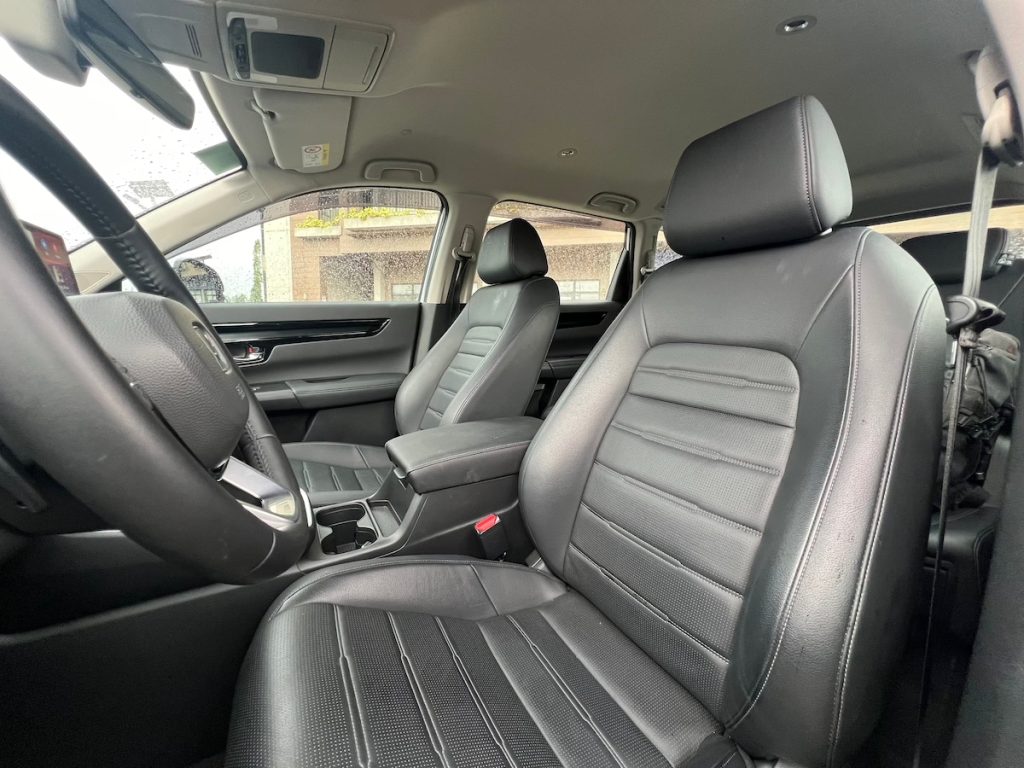
Is the RS e:HEV Worth the Extra Cash?
Now, let’s talk money. The CR-V V is priced at around P2,100,000, while the RS e:HEV comes in at P2,590,000. That’s a P490,000 difference. So, is the RS e:HEV worth the premium?
In a word: yes. The upfront cost might sting a bit, but the long-term fuel savings alone could make it worth it, especially if you do a lot of driving. Plus, the added features, sportier design, and advanced tech make the RS e:HEV feel more luxurious overall.
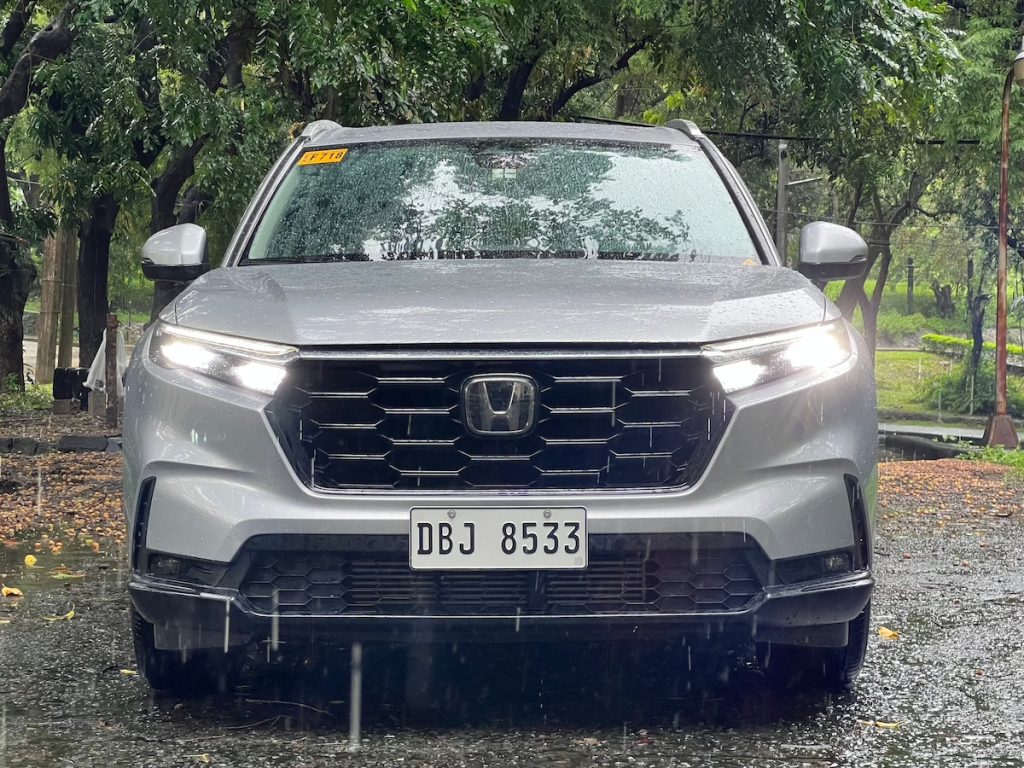

That said, if you’re not ready to shell out the extra cash for a hybrid and just need a solid, reliable family vehicle, the CR-V V is still a fantastic option. It’s not a “bare-bones” model by any means, and it even offers better ride comfort than some of the ladder-frame SUVs in the market.
Both the Honda CR-V V and the RS e:HEV offer something for different types of drivers. If you prioritize fuel efficiency, tech, and a sportier vibe, the RS e:HEV is worth the investment. But if you need extra seats for the family and prefer the traditional feel of a turbo engine, the CR-V V is an excellent, practical choice. Whichever one you choose, you’re getting a well-rounded crossover that’s packed with Honda’s signature reliability, comfort, and safety features.

